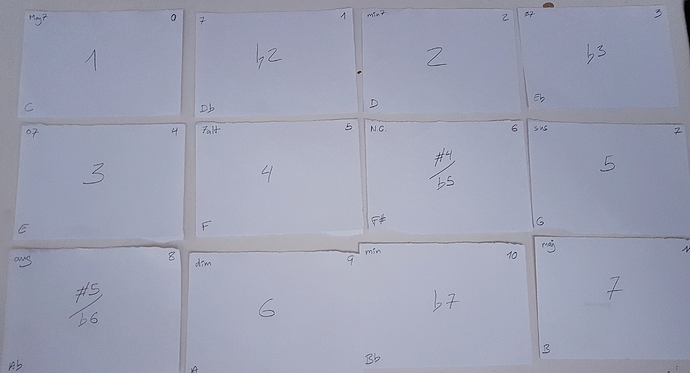Folks wrestling with key signatures while working on solfege might want to check out books like the following where having everything in Cmaj/Amin translates nicely…
Ideally you get to a point where you can “feel” the degree of the note against the key aka the 5th or so always gives the same sensation regardless of the key, even between major and minor it’s still the same, but a little harder to get it.
Before you get to that point you can work it out on your instrument. Simpler music (and not so simple too) will be very heavily chord tone based.
Short answer - familiarity, and it won’t work ending on any other syllable.
Listen to the melody a few times, and identify the most stable note (the tonic, often the last note of a tune). That’s do.
You’ll know when your ear is developing when the syllables reveal themselves after just hearing a few notes.
I’d suggest to try making your own though. Write down a few random syllables ending on do, play them and see how it sounds. Helps if you can have a drone of the tonic playing in the background, or even a repeating V I chord progression.
To my ear the 5th degree of a major scale (so) and the 5th degree of a minor scale (mi, using movable la minor solfege) sound quite different.
It’s all a matter of perspective in the end, and whatever works is valid. There’s no cheating ever.
The way that works for me: The Root (aka 1) is always Do regardless of key or mode considerations. It’s probably not the easiest way but it relates everything to a single concept, and that’s worth it if you ask me.
For this style of Ear Training you can check out https://muse-eek.com/
Bruce Arnold has a ton of ET courses and the main concepts come from jazz educator extraordinaire Charlie Banacos.
Do you have any concrete recommendations, for a beginner? He has a rather impressive selection in the webshop!
Sure,
The first two on your list should be One Note Complete (recognize a single pitch’s degree against a key) and Contextual Ear Training (sing a single pitch against a key). So that’s both sides of the coin if you will.
I believe they were on Spotify at one point so you may have a chance to check them out there first. Good luck!
Apps like Politonus can also give a sense of the different scale degrees.
oh man…
I guess Chopin and Listz could agree with you but I don’t agree with them, nope.
Haha, I wouldn’t have known what @BubbaMc was talking about until recently. Unfortunately I was taught “key-hopping” before I was taught the real nature of the instrument. 
Cool, this is perfectly valid. In fact a lot of music conservatories teach it this way.
Indeed, fine. I just like to be able hear other ranges sharing structure, working independently.
do re mi
fa so la
so la ti
Useful for singing a melody through changes that readily detour, where the detour is not as evident sung from the perspect of a single chord. And, I found myself getting away from a “one bias” when I could hear structures from any point in a scale.
So many different ways to approach this stuff, keeping the brain engaged and interested.
Hey gang,
Here’s an idea to randomize your ear training (or technical or music theory or whatever) practice sessions:
You just need 12 pieces of paper or cardboard and the scale degrees (1,b2,2… all the way up to 7) in the middle.
What I’ve added to that is:
- Upper Left: Chord or Triad Qualities
- Upper Right: Half Steps of the interval to the tonic (12 tone style)
- Lower Left: Note of the degree in the Key of C
- Lower Right: Haven’t thought of something yet (inversion maybe)…
Ok, the only rules are:
- always start with your “cards” face down so you can’t tell what’s next.
- always shuffle “the deck” before starting
Here’s a couple of exercises, please feel free to share other ones you come up with:
Ex1
- 1st draw is the key
- 2nd draw is the chord quality
- Put both cards back in the deck and re shuffle it
- Sing every interval over the established chord
4a. Move the voicing through the cycle of 4ths/5ths and do the same on all 12 keys
4b. Move to the next inversion of the voicing and repeat the process
Ex2
- 1st one is the interval and 2nd one is the key
- Name it FAST! The better you get the shorter it has to be
- Do it in reverse: 1st one is the key and 2nd one the interval
Ex3
- 1st card is the key, play that note
- 2nd one is another degree, sing and then play to test yourself
Ex4
- 1st draw is the key and 2nd one is chord quality (or in reverse)
- Play a line over it (start with 4/4)
- Re shuffle and repeat step one
- Play another line over the next chord that “makes sense” (similar rhythms, continues direction, uses the same intervallic ideas, comes from similar scales/vibe…) after the first one
- Repeat
These are just some of mine. Please share yours!

